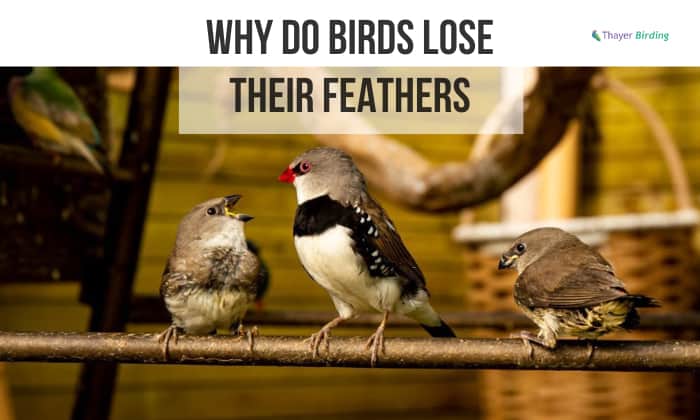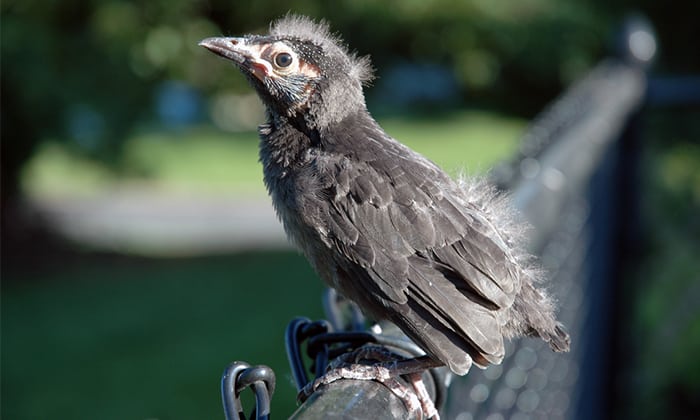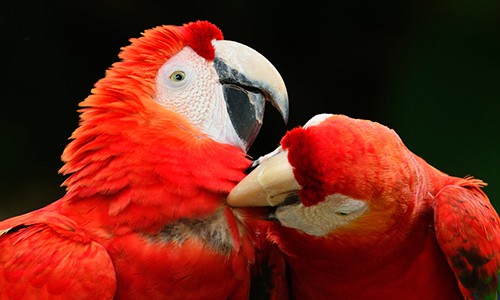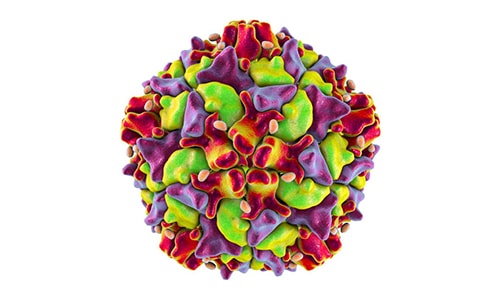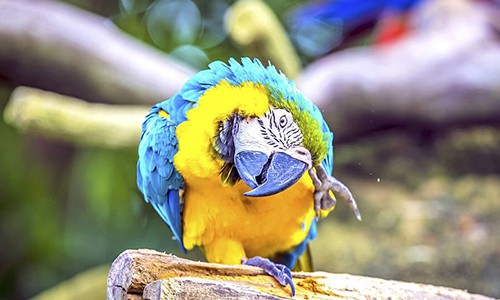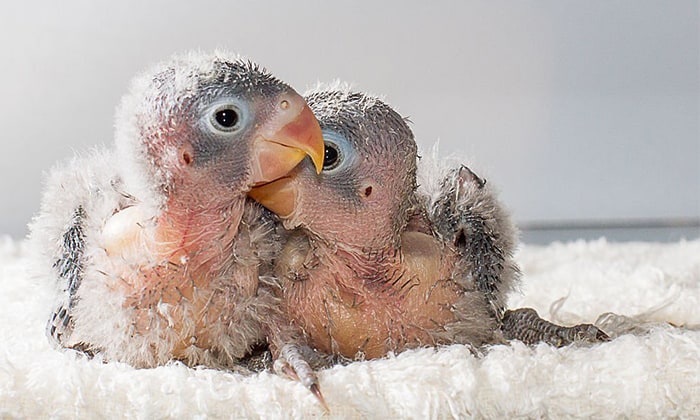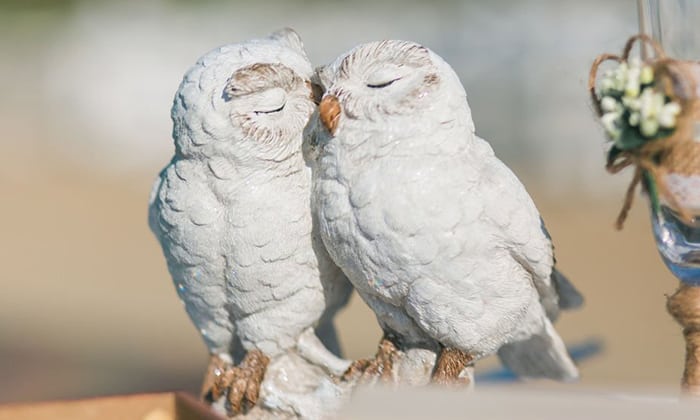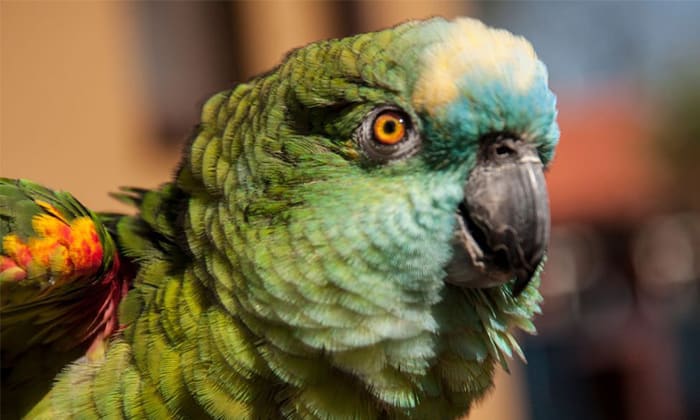Why do birds lose their feathers? Is it normal? Many new bird owners and bird watchers asked these questions at least once after noticing their bird missing feathers.
There is no need to worry; birds shed their feathers once or twice a year to grow new ones. This is called molting and is a very normal occurrence for avians. However, there might be other reasons. Read more about this topic.
Table of Contents
Why Do Birds Lose Their Feathers
Parrots without feathers? It could be because of the birds molting. But what exactly is molting? In birds, the molting definition refers to the shedding of old feathers. After casting off the outer layer, new growth begins for replacement.
- Color change
Molting in birds is noticeable in their changing plumage as the season changes. The breeding season displays some of the most vibrant and colorful bird feathers. Then, the feather will turn dull for a short time until the next spring.
- Survival propose
Shedding old feathers is not only about the color change but also has something to do with survival. Old feathers are weak and damaged. Through molting, birds can grow a new and stronger set of feathers to aid them in flight and keep them warm in the winter.
- Different molting cycles among birds
Different bird species experience different molting cycles, frequencies, and types (i.e., partial or complete). Small to medium birds undergo a complete molt once or twice a year, while larger bird species shed and replace their feathers through partial molting several times.
For instance, Townsend’s Warblers complete their molting process before migration. Swallows will pause molting during migration and complete it in their wintering spot.
On the other hand, Gray Flycatchers finish up molting when they reach the ground after a long flight.
Other Reasons Birds Lose Their Feathers
Aside from molting, which is a natural occurrence in birds, there might be some other explanation for the sudden shedding of feathers. Let’s look at some physical and emotional issues that could lead to birds losing their feathers.
- Stress
Stress often causes destructive behaviors. Birds resort to plucking their feather, not minding if it is ready for molting or not.
Changes in the environment, like dietary conditions and anything that can disrupt their routine, can cause stress in your pet bird. Figure out what’s causing it and try to slowly integrate the change until they are well adjusted.
- Parasites
Aside from stress, excessive feather plucking can be caused by mites. These parasites can cause severe irritation and itchiness.
Check for red or black insects on the bird and its cage. If you suspect mites and want to be sure, try covering the cage with a white sheet at night. You will see red or black dots on it in the morning if there are mites.
If mites are indeed the underlying cause, you can address the issue by spraying the cage with an approved insecticide. You can also apply this medication to the bird’s feathers.
- Virus and Bacteria
Birds with circovirus can experience shedding feathers on their head or any part of the body. Polyvirus is another common culprit linked to feather loss in birds. Skin infection caused by yeast or bacteria can result in bald patches on the skin.
Losing feathers through viruses and bacteria causes permanent damage to the follicles. This means growing new feathers could be delayed or almost impossible. Taking the bird to the veterinarian as soon as possible is the best course of action.
- Health Issues
Several health problems like hormonal imbalance, tumors, gout, arthritis, and other underlying diseases can cause birds’ feathers to fall out. Often, diseases only affect one area of the body and are tricky to cure without the help of a veterinarian.
- Excessive Grooming
Over-preening can lead to feather damage and unnatural shedding. This is an issue for pre-fledged birds who lack preening education. As such, you’ll need to teach it by misting it with lukewarm water, which will convince the bird that it’s clean.
In other cases, excessive grooming can also be due to boredom, a dry environment, a poor diet, or a cage mate that is overly engaged in preening others. Aside from improving your pet’s diet, try to provide the bird with distractions, such as toys.
Effect of Losing Feathers On Birds
Molting is stressful and draining for birds. Not because the process of shedding the feathers is painful but because growing new feathers involve a lot of work.
Depending on the molt’s intensity, the birds may experience:
- Weight loss
- A temporary pause in egg production and reproductive organs
- Thermoregulatory setback
- Altered hormone levels
- Changes in blood chemical
Furthermore, heat loss is more likely during molting since it affects insulation. It also impacts their flight as they lose feathers and energy, which are needed for flying.
Breeding and migration do not overlap with molting since each of them requires a ton of energy to accomplish. Birds tend to be discreet, quiet, and less active when molting. They are in a vulnerable state and want to avoid predators and other dangers until they grow new feathers.
As a bird owner, it is important to know what happens to your pet during molting. That way, you can understand their behavior and give them the support they require in the form of proper nutrition. Feed them more iron, calcium, and protein during molting.
Treatment for Excessive Feather Loss in Birds
Bird shedding some feather is normal. They’ll regrow feathers once the molting period is done. You don’t have to do anything other than give them the proper nutrition they need.
But if the bird is not molting and is losing feathers, consider treatment for feather loss. First, investigate what’s causing the unusual feather shedding. Look back at the previous section and use it as a guide.
Then, you can find the ideal treatment, which usually involves a professional veterinarian. They will know what and how to treat your bird.
Signs That Tell The Bird Is Molting
Take a look at this list of bird molting symptoms to help you determine if a bird is molting.
- Preens a great deal.
- Tons of feathers at the bottom of the birdcage.
- Fallen feathers are intact from the shaft to the tips.
- Central tail feathers shed first and move to the middle flying part of the wings.
- A slight change in plumage color.
- Feather roots in the face and head.
- Loss of appetite.
- Lots of screaming and squawking.
- Aggressive behavior
- Very irritable
The moment you notice excessive feather loss in your bird, don’t panic. Check the signs and see if they are molting. If you want to be sure, take them to a veterinarian.
Frequently Asked Questions
How long does it take for a bird to regrow its feathers?
The bird feather growth rate can vary from one to 12 months. Several factors affect how soon or how late the feathers will grow, such as diets, genetics, hormonal changes, overall health, and the reason for feather loss.
For example, plucked feathers can lead to delayed regrowth, while it requires a bird vet for lost feathers due to bacteria or viruses.
Do all birds have feathers?
Yes. All birds have feathers, even those that cannot fly. But you can find a bird with no feathers on head or other areas of their bodies for some significant reason, like mating and incubation. Nevertheless, they are not entirely bald and are considered to have feathers.
What time of year do birds molt?
There is an abundance of wild birds with no feathers in the spring and fall due to molting. The process tends to peak in summer near the end of the season. In winter, you can expect birds to have a new set of feathers to protect them from the cold.
How often do birds molt?
Molting happens in parrots 1 to 2 times a year. They shed feathers in the fall and spring, lasting for approximately 2 months.
The frequency can change depending on the bird species and their size. Large birds will only molt once in 2 years, while medium-sized ones can molt up to 3 times a year.
What do unhealthy bird feathers look like?
A healthy bird feather should look bright, glossy, and smooth. It is vital to regularly check your bird’s feathers once every week to check their condition. The following can indicate a declining feather condition that requires further examination.
- Dry and brittle
- Dull color
- Discoloration
- Skin disorder
- Stress bars
- Damages
If you notice one or more of these signs in your bird, get in touch with an avian vet. They can help you determine the cause and provide proper treatment.
How do parrots molt?
Parrots start molting in the fall and last for about 2 months. The molting begins with wing feathers and ends with the tail.
It is a symmetrical process, which means the new feathers will grow in the same spot left by the fallen feathers. This helps parrots maintain the balance needed for flight.
Conclusion
Why do birds lose their feathers? They could be experiencing a normal avian process called molting. Birds losing feathers is something you should not panic about right away.
We hope all the information in this article provided you with answers to your questions about birds feathers falling out. Now, you can tell if your pet bird is molting or is hiding an illness from you.
Do you have a story to share about your bird molting? Share them with us in the comment section below!

George and I became friends after a birdwatching trip with our new group. And we have been enjoying every adventure together. When he told me the idea of establishing a site that shares our experiences and fun, I immediately agreed. After trials and errors, here we have Thayerbirding.


